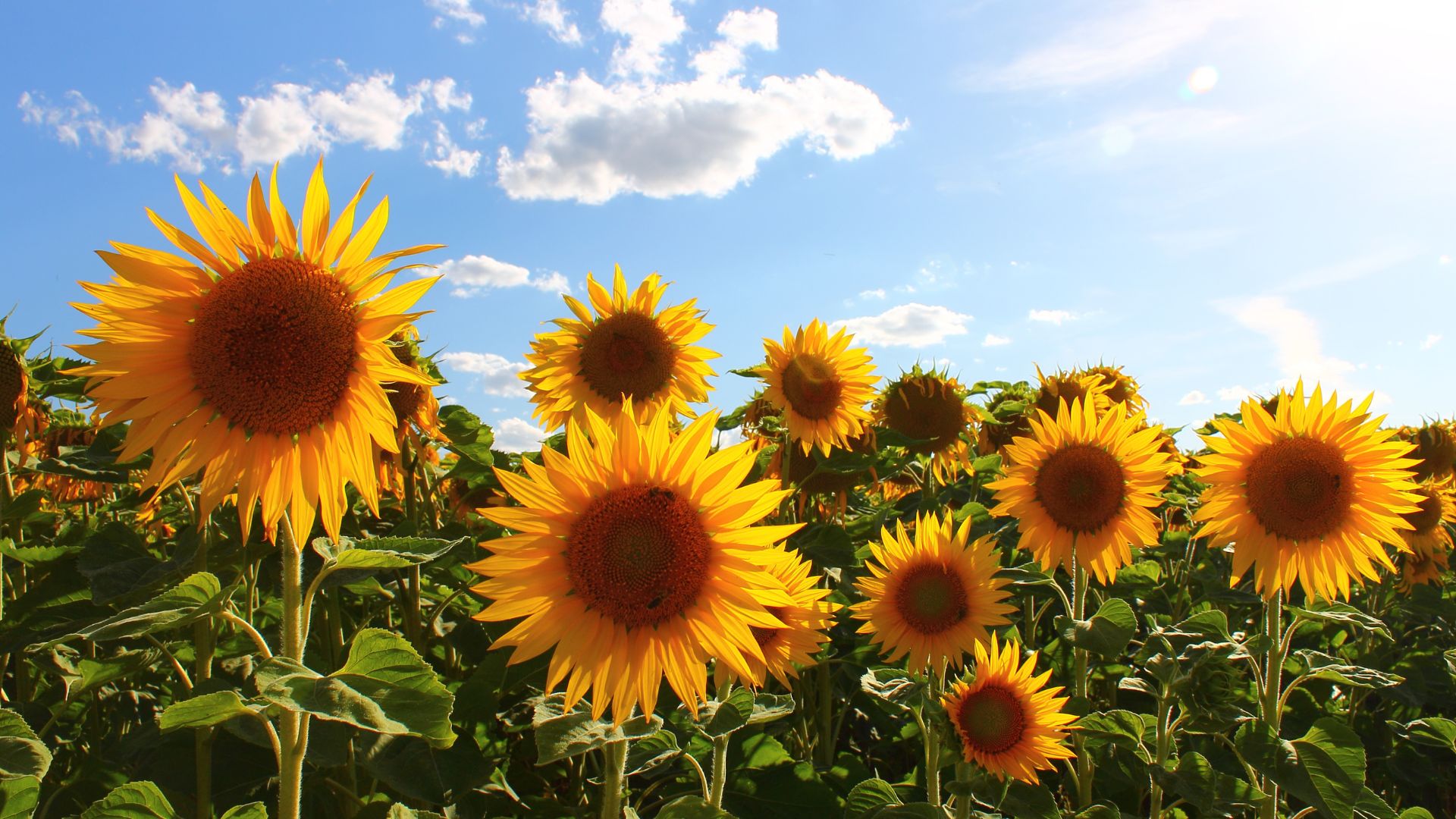The sunflower, scientifically named Helianthus annuus, is a remarkable oilseed plant belonging to the Asteraceae family. Recognized for its distinctive, cylindrical stem adorned with fine hairs and broad leaves, the sunflower is a dicot with a robust sphenoid root system. It features large, radiant flowers that are both radial and tubular, famously known for tracking the sun’s movement across the sky—a behavior that has led to romantic and spiritual analogies.
Regarded as the third most significant oil crop globally, sunflower cultivation thrives in Sudan and Yemen within the Arab world. Optimal planting in the Middle East is advised from late spring to early summer, with a growing period of approximately 90 days. Initially requiring weekly irrigation, the frequency increases with rising temperatures, reaching two to three times per week.
Sunflowers excel in full sun environments, demanding 6 to 8 hours of direct sunlight daily and a long, warm summer to bloom profusely. They are best grown in well-drained, nutrient-rich soil, slightly acidic to alkaline (pH 6.0 to 7.5). Notably, sunflowers are resilient against soil salinity, heat, and pests, while also being economical to cultivate.
Natural Defenders and Environmental Enhancers
Acting as natural weed inhibitors, sunflowers utilize their biochemical antioxidant properties to suppress the germination and growth of weeds, effectively serving as a biological shield for other crops. Farmers can leverage sunflowers’ power through intercropping, cover cropping, or using their residue as mulch, thereby enhancing soil health, reducing chemical herbicide dependency, and fostering biodiversity.

Pest Management and Disease Prevention
- Sunflowers are generally resistant to many insects, though they may occasionally be targeted by a small gray moth known as the sunflower moth, which lays its eggs in the flowers.
- They can also be susceptible to fungal diseases, including downy mildew, rust, leaf spot, gray mold, and powdery mildew.
- To protect seeds from birds and squirrels, consider using netting or a white multi-membrane fleece over the heads as they mature, as illustrated in the accompanying picture.
- If deer are a concern, a tall wire fence can help protect young sunflower heads from being eaten.
Sunflower Seeds
Sunflower seeds contain 35-55% oil and small amounts of fluorine, glucides, and vitamins A, E, and D. They are also rich in minerals like magnesium, zinc, iron, phosphorus, copper, and selenium.
Historically, American Indians utilized sunflower seeds as flour for baking and extracted oil from them, which is rich in essential fatty acids, predominantly unsaturated fats that help reduce harmful cholesterol (LDL) in the blood. The oil also contains Omega-6, vital for body growth and overall function.
The vitamins in sunflower oil, particularly A, E, and D, are crucial for strengthening the immune system.
Sunflower seeds also contain fluorine, which helps prevent tooth decay. Traditionally, sunflower seeds were used to treat malaria and their oil is commonly used in food preparation.
Despite their numerous health benefits, it is advisable to consume sunflower seeds in moderation and pay attention to how they are roasted and prepared, as added salt and spices can be detrimental to health if consumed excessively.
Sunflowers attract honey bees; a hectare can produce about 50 kilograms of honey and serves as an excellent pollen source.
Dwarf varieties of sunflowers are perfect for decorative purposes and floral arrangements, adding a cheerful touch. They can also serve as natural dividers in gardens.
Throughout their approximately 90-day life cycle, sunflowers track the sun, embodying a story of love or worship, ultimately offering substantial benefits to both humans and nature.

